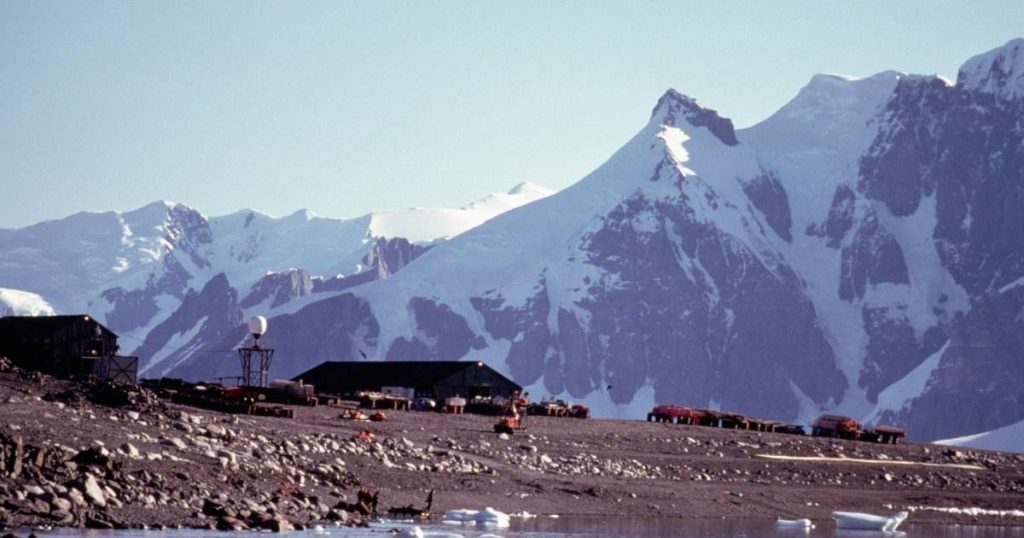Christmas in Antarctica: A Unique Celebration Amidst Scientific Endeavors
While festive cheer fills homes across the globe, a dedicated group of scientists and researchers will experience a vastly different Christmas in the icy expanse of Antarctica. December 25th marks midsummer in this remote region, offering the warmest temperatures and perpetual daylight, ideal conditions for scientific exploration. For the nearly 300 personnel from the British Antarctic Survey (BAS) stationed across five research facilities, the RRS Sir David Attenborough, and various field sites, returning home for the holidays is logistically impractical. Their Christmas will be a unique blend of scientific pursuits, festive traditions, and the awe-inspiring Antarctic landscape.
Life in Antarctica during Christmas is unlike anywhere else. The human inhabitants are significantly outnumbered by the estimated 40 million penguins that call the continent home. While past explorers like Captain Scott’s team resorted to consuming penguin meat, the 1959 Antarctic Treaty strictly prohibits any interference with the native wildlife. Christmas in Antarctica, therefore, is more about appreciating the unique environment than partaking in traditional feasts. The stark beauty of snowy mountains and colossal icebergs provides a breathtaking backdrop, contrasting sharply with the functional architecture of the research stations. While a snowball fight might seem tempting, the precious daylight hours are primarily dedicated to scientific work.
The spirit of Christmas, however, is not lost in this remote setting. At Rothera, the largest British research station, the festive spirit manifests itself in creative decorations crafted from recycled materials. Origami penguins and stars made from old paper adorn the station, while wreaths fashioned from discarded items contribute to the annual Christmas Door Competition. Although turkey might not be on the menu, a special festive meal is prepared for the staff. Past Christmas dinners have included innovative dishes like chestnut cheese croquettes, roast beef with cranberry gravy and chestnut-bacon sprouts, followed by yule logs, Christmas cake, and a nod to the chef’s heritage with Danish Flodeboller.
The RRS Sir David Attenborough, the UK’s polar research vessel, also embraces the holiday spirit. The crew engages in festive activities such as crafting homemade gifts for a secret Santa exchange and enjoying Christmas movie nights. Their Christmas Eve involves a crucial mission: deploying a research team to their study site south of the Antarctic Peninsula, where they’ll spend Christmas Day immersed in their scientific work. On Bird Island, off the coast of South Georgia, another small team of zoological field assistants dedicates their Christmas to monitoring the eggs of wandering albatrosses, fur seal pups, and the chicks of various seabirds.
Despite the isolation, BAS staff can now connect with loved ones back home through satellite phones, bridging the vast distance and allowing for shared holiday greetings. Perhaps the most pressing concern for those celebrating Christmas in Antarctica is whether Father Christmas, starting his journey from the distant Lapland, will be able to reach them in time. Their Christmas experience, while unconventional, is a testament to human resilience and the enduring spirit of celebration, even in the most remote corners of the world.
The contrast between a traditional Christmas and the Antarctic experience highlights the diverse ways in which this holiday is observed. While most people associate Christmas with family gatherings, festive meals, and gift-giving, the scientists in Antarctica celebrate amidst a unique backdrop of scientific exploration and environmental appreciation. Their dedication to their work underscores the importance of research in understanding our planet and the delicate ecosystems it supports. Their resourcefulness in creating festive cheer from recycled materials demonstrates a commitment to environmental responsibility.
The Antarctic Christmas exemplifies the adaptability of the human spirit. While separated from the comforts of home and familiar traditions, the researchers create their own unique celebrations, embracing the challenges and beauty of their surroundings. Their experience offers a fresh perspective on the meaning of Christmas, showcasing the importance of camaraderie, resilience, and the pursuit of knowledge, even in the face of isolation and challenging conditions. It is a testament to the human capacity to find joy and meaning in unexpected places and to adapt traditions to fit unique circumstances. The Antarctic Christmas story serves as a reminder that the spirit of the holiday can thrive anywhere, regardless of geographical location or cultural context.


